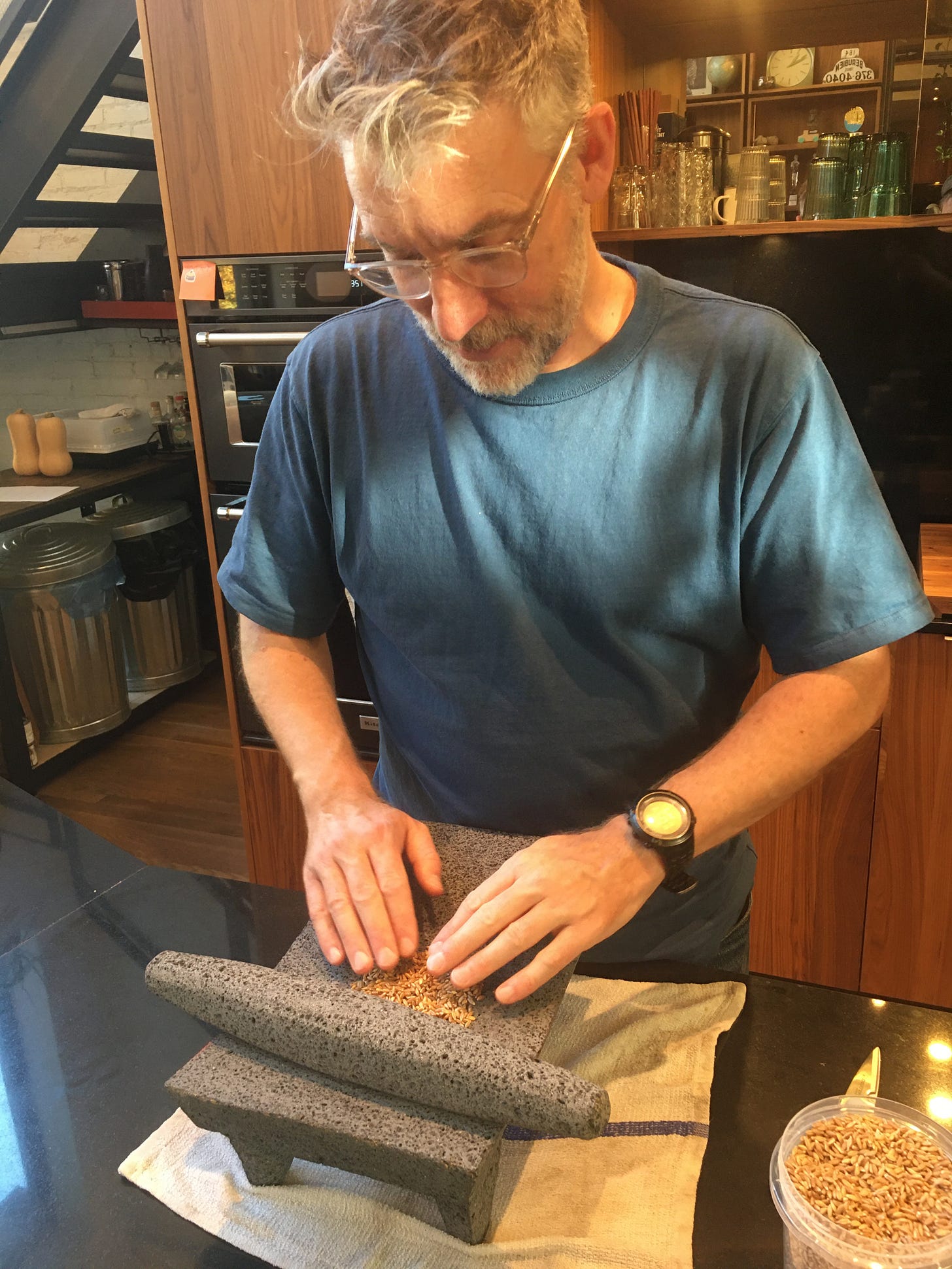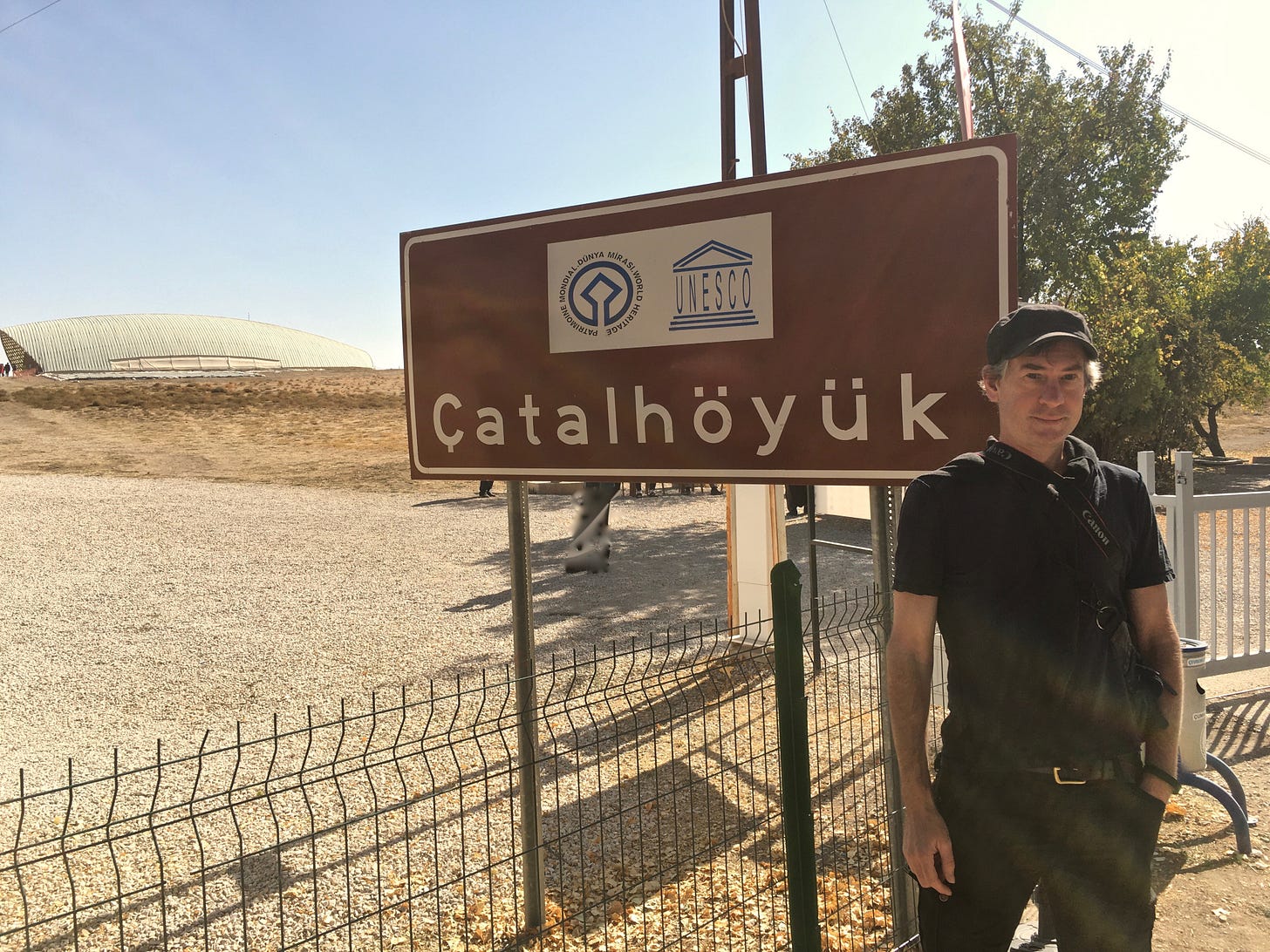How to Make Neolithic Flatbread
Recreating the World's Oldest Daily Bread—Pt. 1
During the writing of The Lost Supper, I had a goal that became an obsession: recreating the bread that was consumed at Çatalhöyük, a proto-city whose ruins I visited in central Turkey. It was the first place where humans lived together in large numbers. Eight and a half thousand years ago, Çatalhöyük (pronounced cha-TAHL-hu-yook) was home to as many as eight thousand people, making it the single largest concentration of humans that had ever lived on earth.
Fresh-baked bread provided the long-lived people of Çatalhöyük with a large percentage of the calories in their diet. It was made with a kind of wheat the ancient Babylonians called ziz, the Egyptians called zeia, the Hebrews referred to as kassemet, and contemporary Turks know as kavilca. In English we call it emmer. Along with barley, it was the first wild grass ever domesticated, putting it among the most ancient of the ancient grains.
On the Çatalhöyük site, I found replicas of the saddle querns that people there used to grind the emmer into flour, as well as the ovens used to bake the dough into bread. They resemble firins, the beehive-shaped ovens used in villages in contemporary Turkish village to make ekmek (bread, but also the Turkish word for food or sustenance).
Keep reading with a 7-day free trial
Subscribe to The Lost Supper, from Taras Grescoe to keep reading this post and get 7 days of free access to the full post archives.




